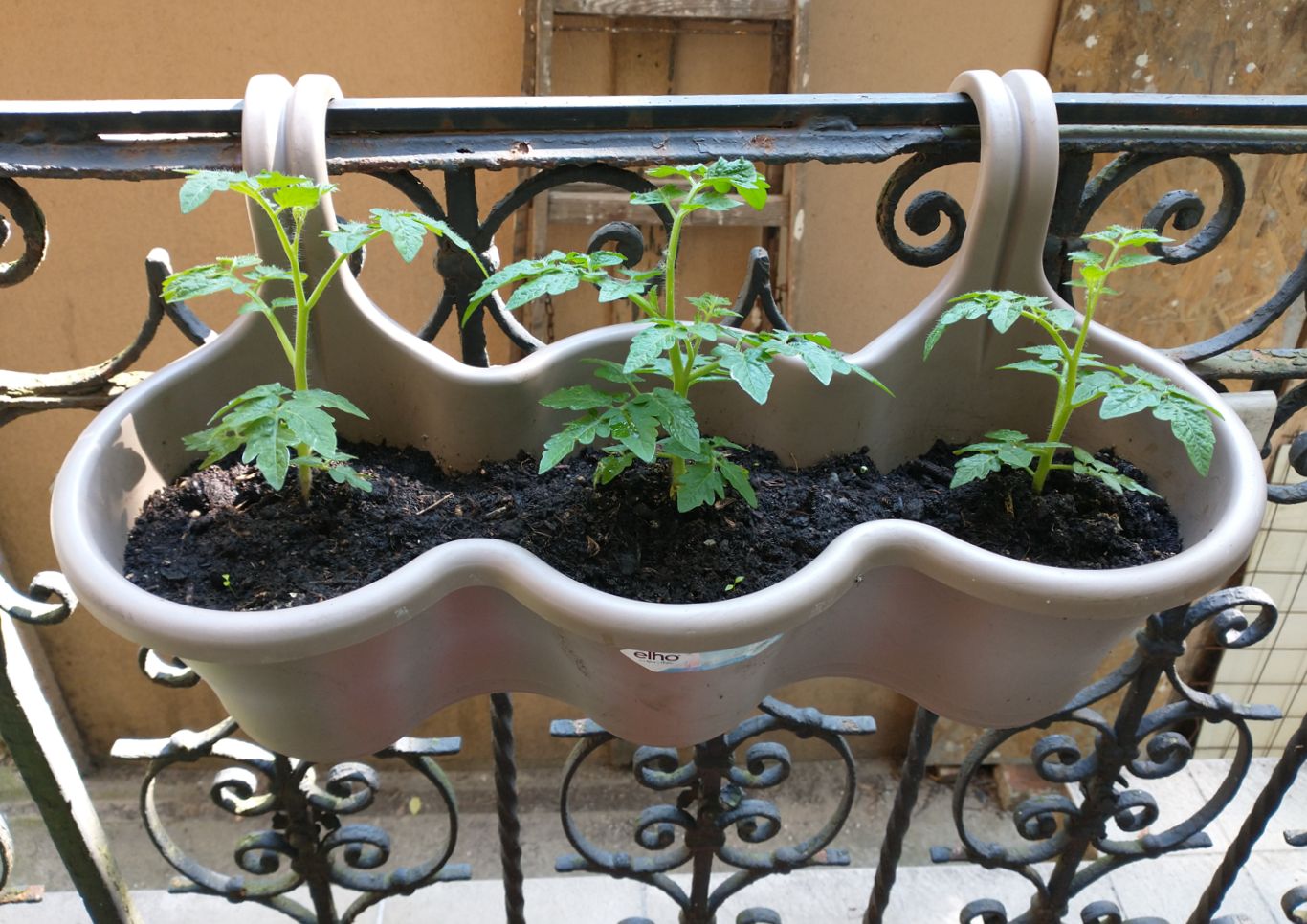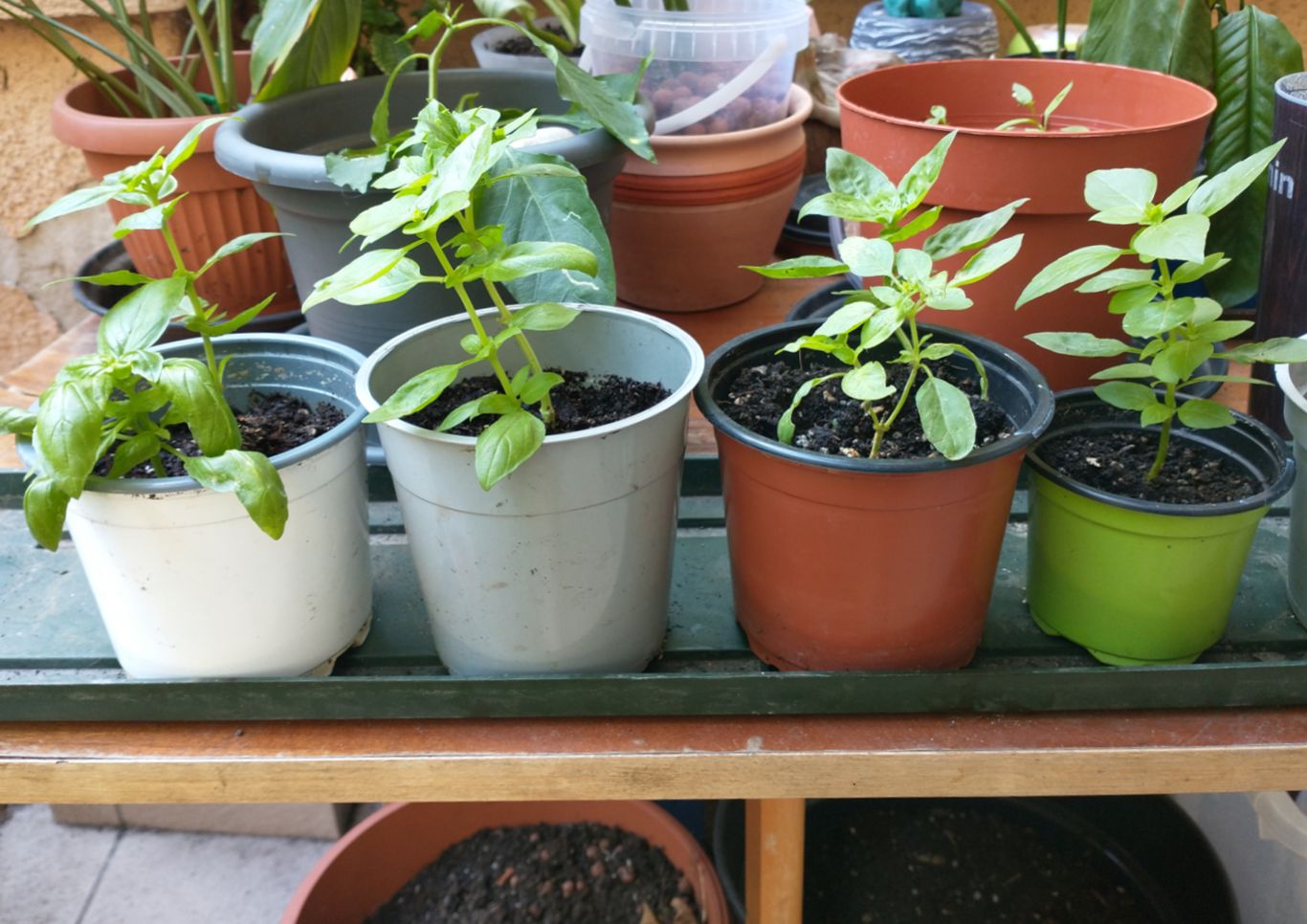Lessons In Container Growing

Last week my boss asked me point-blank: Why do you like plants so much? I tried bullshitting that it’s rewarding to nurture something, to be patient, to care for something that requires so little from you. In all honesty plants and video games are simply the only two things that have strongly carried over from my childhood.
I grew up on 0.75 acres with my grandparents in rural Vermont, and virtually every square foot of that land was converted into garden space after they retired. I can remember watching a large tree being cut down and its stump dug out with an excavator from what would become the largest part of the garden. When the lawn behind the house was also being tilled up, I remember watching my father tear the bumper off of his car in an attempt to use it to tow out a particularly large stone.
And I still remember a lot of the seasonal rituals; starting cucumber plants indoors, tilling the ground after the thaw, carrying 50lbs bags of granular fertilizer, dehydrated manure, powdered calcium carbonate, building trellis fencing for peas knowing I would have to tear them down again in the fall. Spending my summers on morning chores, and playing Diablo II while waiting for cars to stop and for people to buy our fresh produce - before farmer’s markets and “buy local” were cool.
I didn’t always understand what I was doing, and I’ve made a few attempts at going beyond what my grandparents taught me, like taking an entire course on plant growth and function in college. I thought it would help me grow better vegetables but I found myself drawing cell diagrams and replicating DNA in the lab, although I did learn enough plant anatomy terms to enjoy what in the last year has become my all-time favorite YouTube channel.
Now I live in a Budpest apartment, and trying to hang onto gardening has required some new learning since a lot of the lessons from those 0.75 acres don’t apply to my 60 square meter urban space.
What Grandpa didn’t teach me
Germination
In late spring or early summer my family tossed seeds in the ground and they grew, or we transplanted some plants we’d bought from the greenhouse and been keeping indoors.

I grow some leaf and root vegetables in containers and the simplicity of yeeting seeds into soil and seeing greens a few weeks later largely holds, but I’m learning that some of the plants we’d normally get from a nursery take a lot of effort and patience to nurture from seed to seedling.
I’ve lost packets of seeds to rot because I experimented with the “sandwich bag method”. I’ve lost trays of seedlings to sunburns and overwatering, and impatience - giving up when I didn’t see sprouts after a few days, without understanding it can take several weeks for seeds to germinate. It’s only after two years nursing tiny plant babies at home that I’m even beginning to understand what it takes to guide a plant from being a seed to its first true set of leaves.
Micro-Level Soil Management
I live in an apartment, so I grow in plants containers out of necessity.
In the first year I simply filled pots with pre-made potting mix I purchased from the garden center. By the second year I started to conflate compost and potting mix, and tried to “improve” some of our potting soil by sifting it into a finer product that I thought would make it easier for roots to grow in.
A lot of my plants were dead or dying early this year from trying to live in wet muck or a brick of moist sand.
Bringing planting down to the scale of a container has required a shift in thinking about what a soil actually needs to do and the constituent parts that allow the soil to do it; composts and castings to provide nutrients, coir or peat to retain water, sands and stone to allow drainage and space for air to flow.

I feel like a child making mud pies when I mix these things together. The evolution of my small-scale soil management mirrors the development of my cooking skills, going from complete ignorance, to being able to follow a recipe, and eventually towards relying less on recipes and more on an internal catalog of ingredients and methods to combine them in ways that look and feel right.
Hydroponics

There are a lot of limitations to growing in pots. Perhaps the least immediately obvious one is having to lug bags of dirt or dirt constituents across the city to your home. It’s enough to make you wonder if you can grow plants without soil at all.
Well now you can! At the bare minimum all a plant needs to grow is adequate light and for nutrients to flow around its roots. Soil and sunshine aren’t even necessary. Special LED lights and a circulating nutrient solution are all it takes.
I’ve experimented with passive wick and Kratky hydroponics systems, as well as a somewhat misguided aquaponics setup circulating water out of a small aquarium. Looking ahead to our move in October, I’ve begun planning NFT and Dutch bucket systems to expand my soilless vegetable production even further.
Cloning
In my grandparents’ (relatively) large garden, if a plant was dying we usually cut it down in place and either shredded it for mulch or tossed it into the forest. It was a very utilitarian, “the needs of many outweigh this one” way of working that made sense when there were already so many other healthy plants around.

I’m more limited, and when one of my established plants looks like it might not make it I don’t often have other plants to take its place. I’ve had to learn how to make those backups from cuttings as insurance or as a way to expand my collection as space opens up.
Growing forward (see what I did there?)
It feels good to still be maintaining this connection to my grandparents, and I’m honestly not sure I would be so interested in doing it without the added challenge of adapting to an urban environment.

When I think about end-goals for all this plant business I usually come around to self-sufficiency. On less than an acre my grandparents were able to provide for themselves and have enough left over to make something of a business out of their gardening. I would at least like to see my container gardening and hydroponics reach a level of productiveness where we always have greens and herbs on hand, maybe with some citrus and hot peppers as a treat.
And the ultimate reward would be that, when my kids are grown up, they too are confronted with the question: Why do you like plants so much?